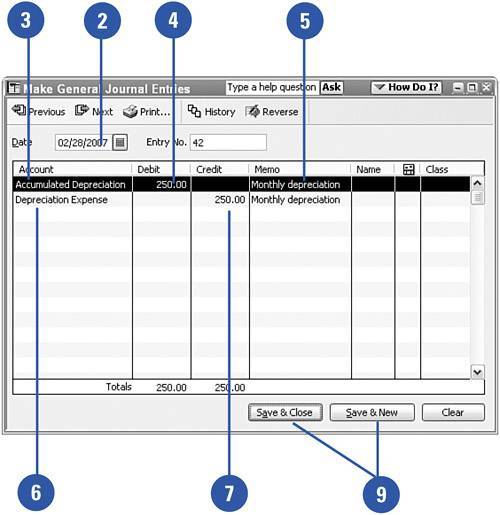Making Journal Entries
| For some transactions, no QuickBooks standard form is available. For these transactions, you use the General Journal. The General Journal is the place where you adjust the balances in your accounts without the use of forms such as invoices, bills, and checks. In this journal, you can reclassify balance sheet information, void a prior period check (as in Chapter 5), record depreciation and amortization expenses, and reclassify amounts charged to the wrong account. General Journal entries are made to accommodate these changes. For this example, we will create a General Journal entry to record depreciation expense. Make a Journal Entry
|
